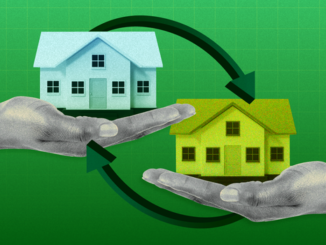
Real estate investors are constantly seeking ways to maximize their financial gains and expand their portfolios. One powerful tool that allows them to achieve these goals is the 1031 exchange process. By understanding and effectively navigating this process, investors can leverage property swaps to unlock significant financial benefits while deferring taxes.
The 1031 exchange, also known as a like-kind exchange, enables investors to exchange an investment property for another property of similar kind without incurring immediate tax liabilities on the capital gains. This process offers a strategic pathway to preserve capital, increase purchasing power, and explore new investment opportunities.
To successfully navigate the 1031 exchange process, investors must understand the basics and adhere to certain eligibility criteria. The properties involved in the exchange must be of similar kind, although this does not mean they need to be identical. Properties can differ in location, size, and even property type, as long as they fall within the broad category of real estate.
Timing is also crucial in the 1031 exchange process. Investors must adhere to strict timelines for identifying replacement properties and completing the exchange. Typically, investors have 45 days from the sale of their original property to identify potential replacement properties and 180 days to complete the exchange.
Professional guidance and expertise are essential during the 1031 exchange process. Engaging the services of a qualified intermediary can help navigate the intricacies of the process, ensure compliance with IRS regulations, and streamline the exchange. Qualified intermediaries play a vital role in facilitating the exchange, holding funds in a secure escrow account, and guiding investors through the necessary steps.
One key benefit of the 1031 exchange process is the ability to defer capital gains taxes. By deferring taxes, investors can allocate their full investment proceeds towards the acquisition of a replacement property, thereby maximizing their purchasing power and potential for financial gains.
Furthermore, the 1031 exchange process opens up opportunities for portfolio diversification and optimization. Investors can strategically swap properties to align with their investment goals, such as acquiring properties in different geographic locations or transitioning from residential to commercial real estate. This flexibility allows investors to adapt their portfolios to changing market conditions and capitalize on emerging investment trends.
While the 1031 exchange process presents numerous advantages, it is important to approach it with careful consideration and proper planning. Investors should evaluate their investment objectives, consult with tax and legal professionals, and conduct thorough due diligence on potential replacement properties. Additionally, keeping abreast of changes in tax laws and regulations is crucial to ensure compliance and maximize the benefits of the exchange.
In conclusion, the 1031 exchange process offers real estate investors a valuable opportunity to navigate property swaps for financial gains while deferring taxes. By understanding the basics, adhering to eligibility criteria, seeking professional guidance, and conducting thorough research, investors can successfully navigate the 1031 exchange process and unlock the full potential of their real estate investments. With careful planning and strategic execution, investors can leverage property swaps to expand their portfolios, increase cash flow, and achieve their long-term financial goals.
#1031ExchangeProcess #PropertySwaps #FinancialGains #RealEstateInvesting #TaxDeferredExchange



